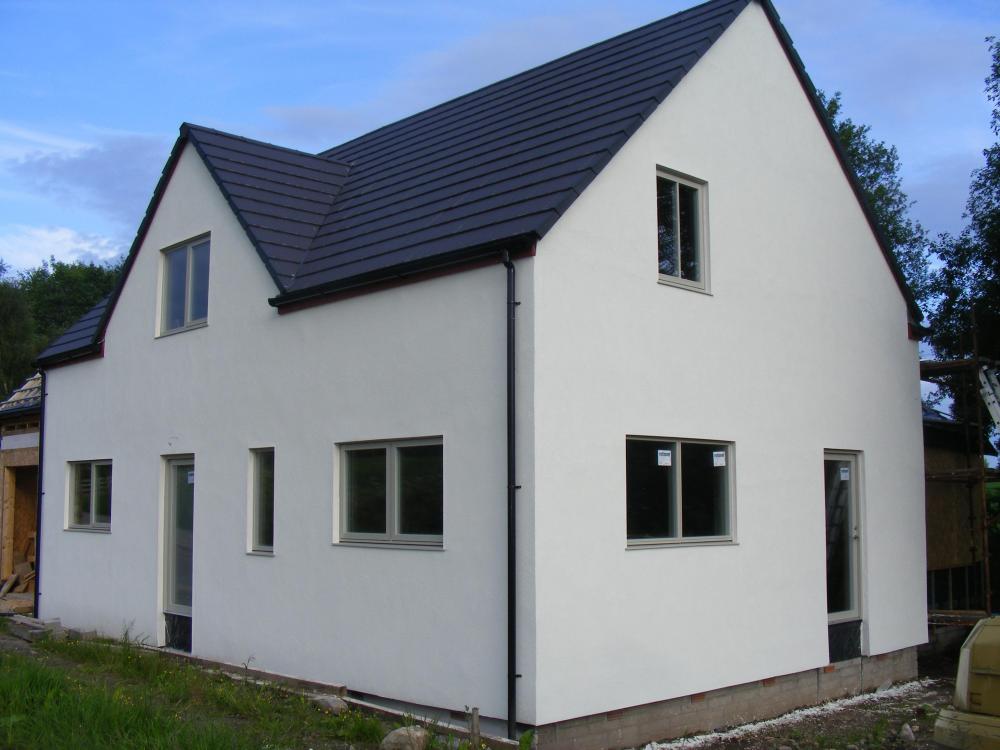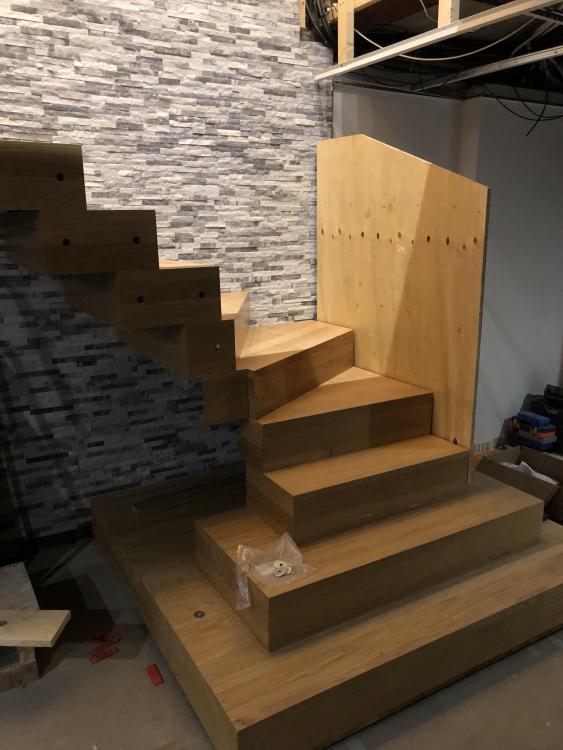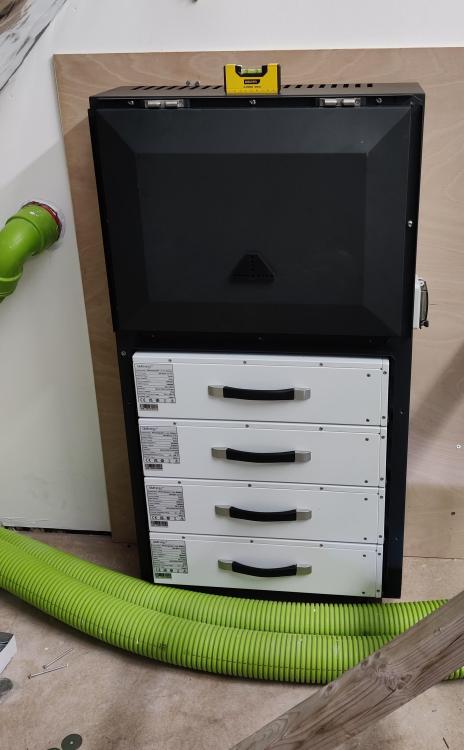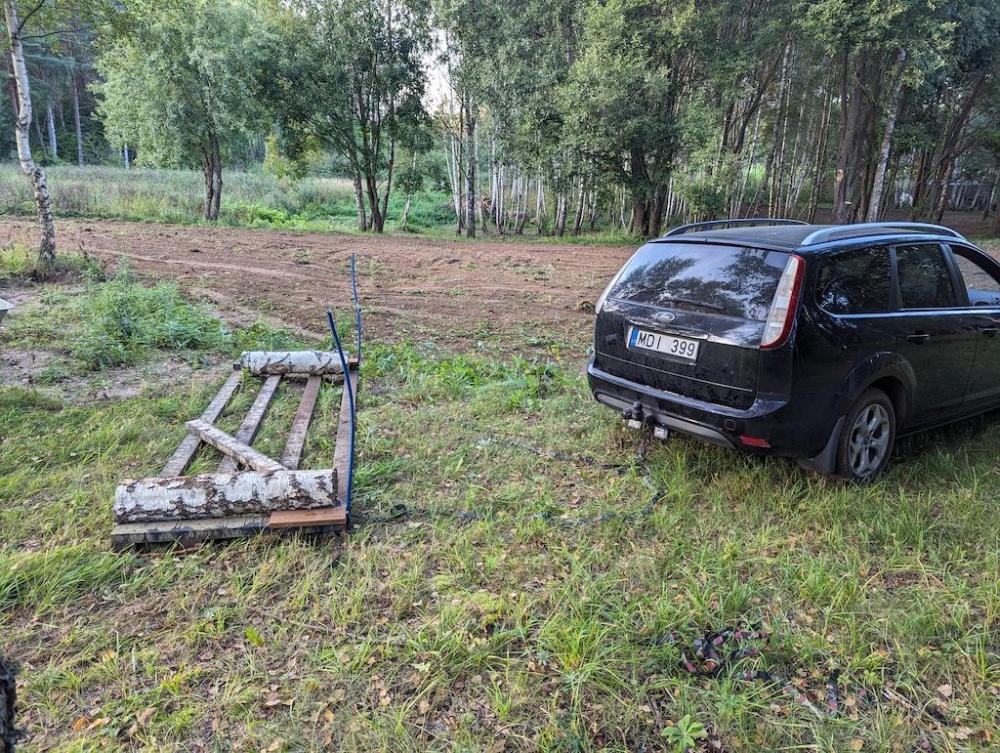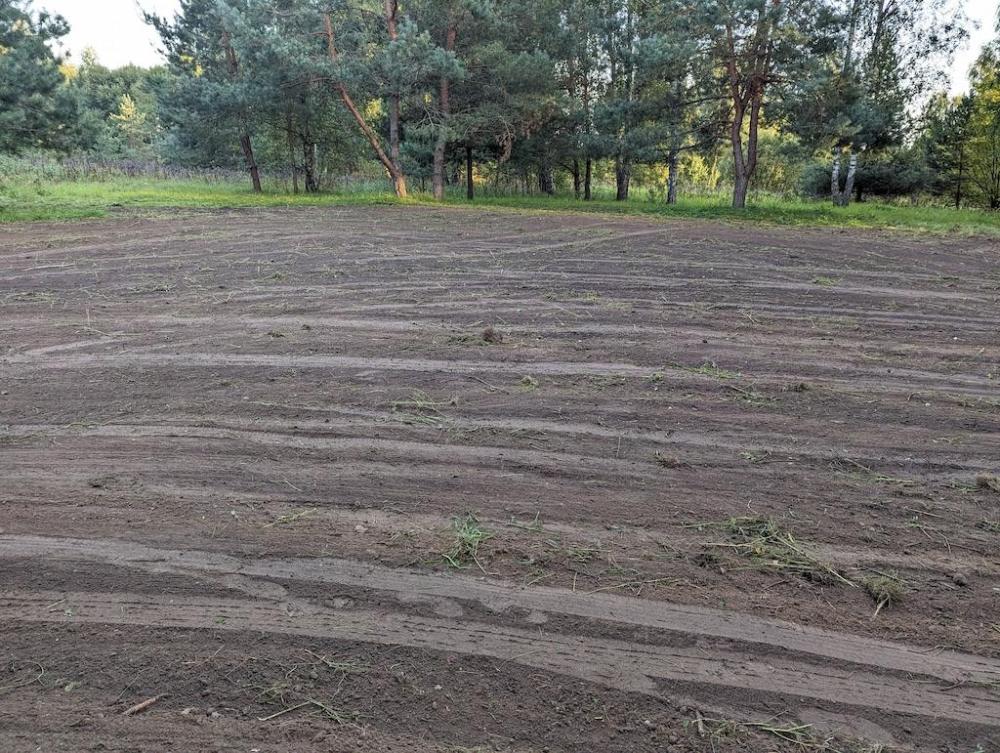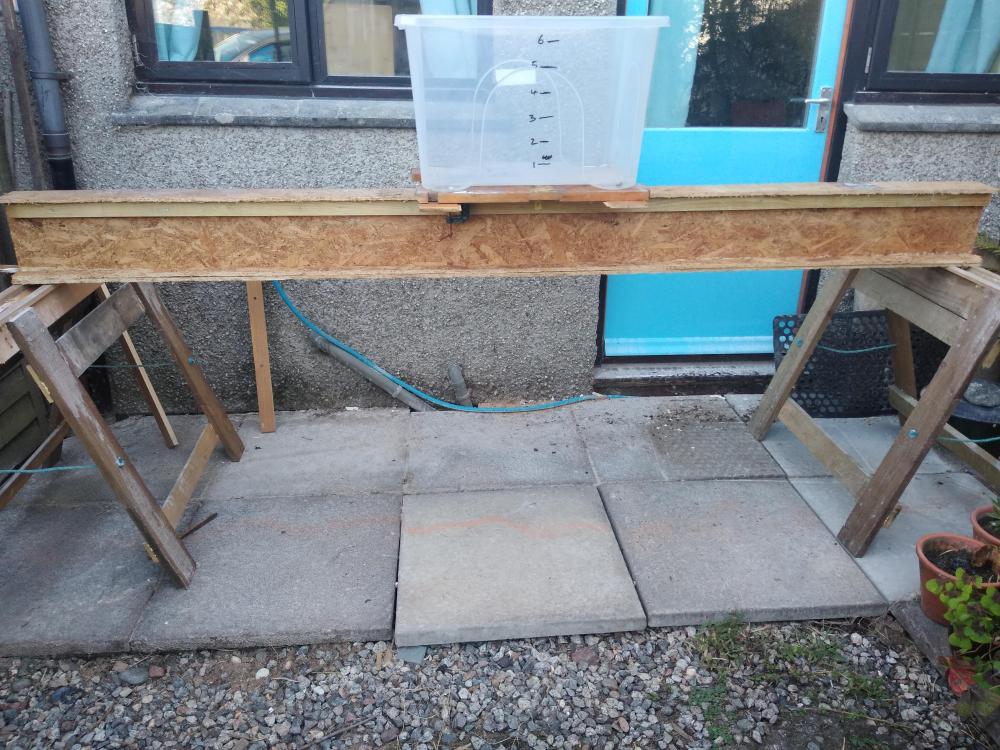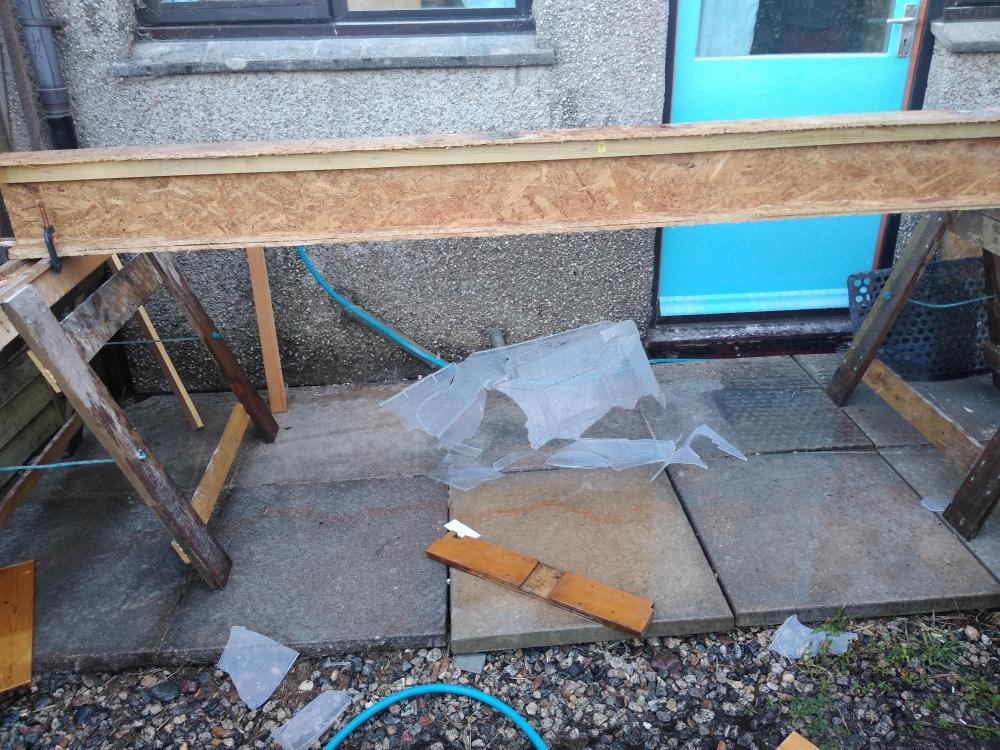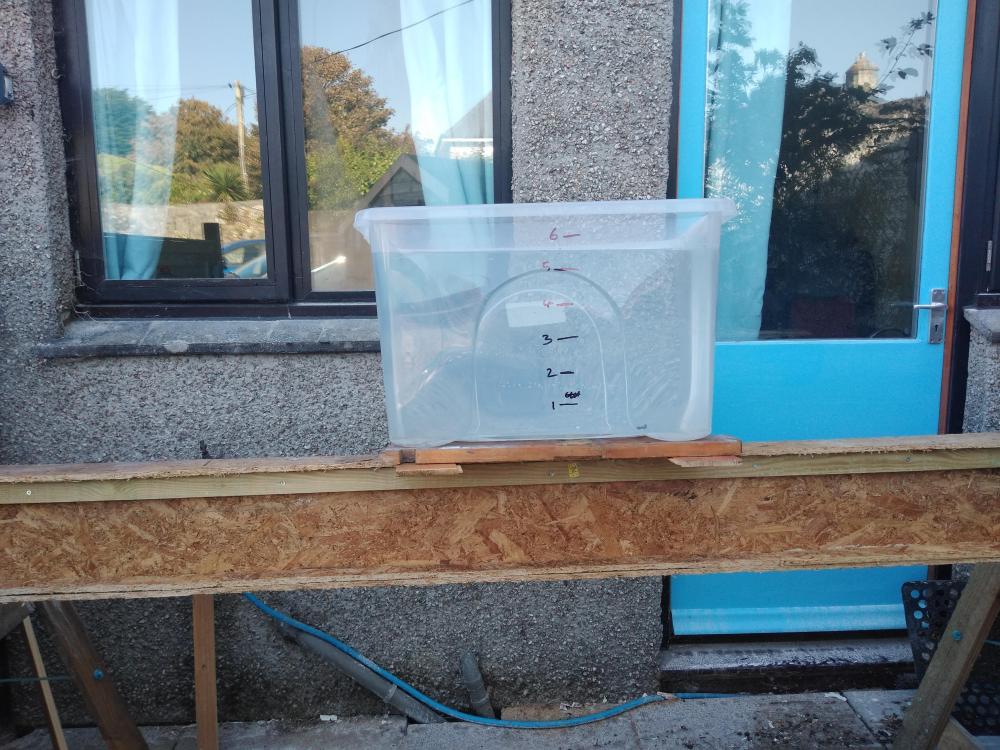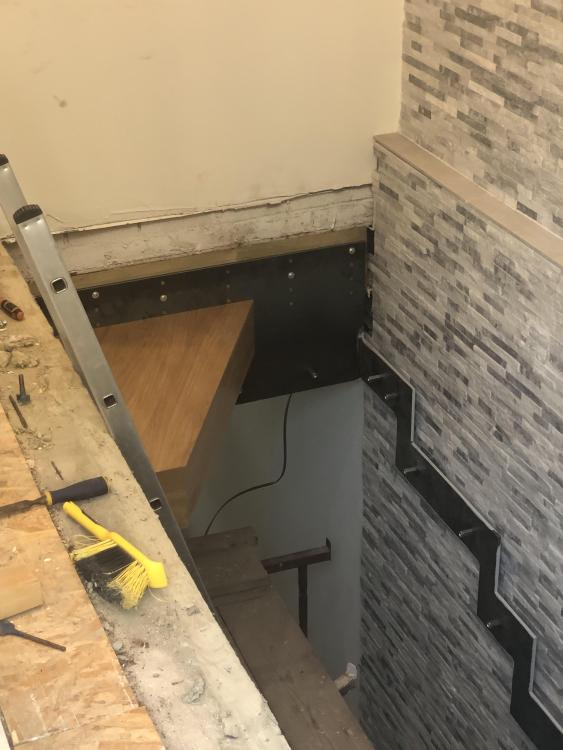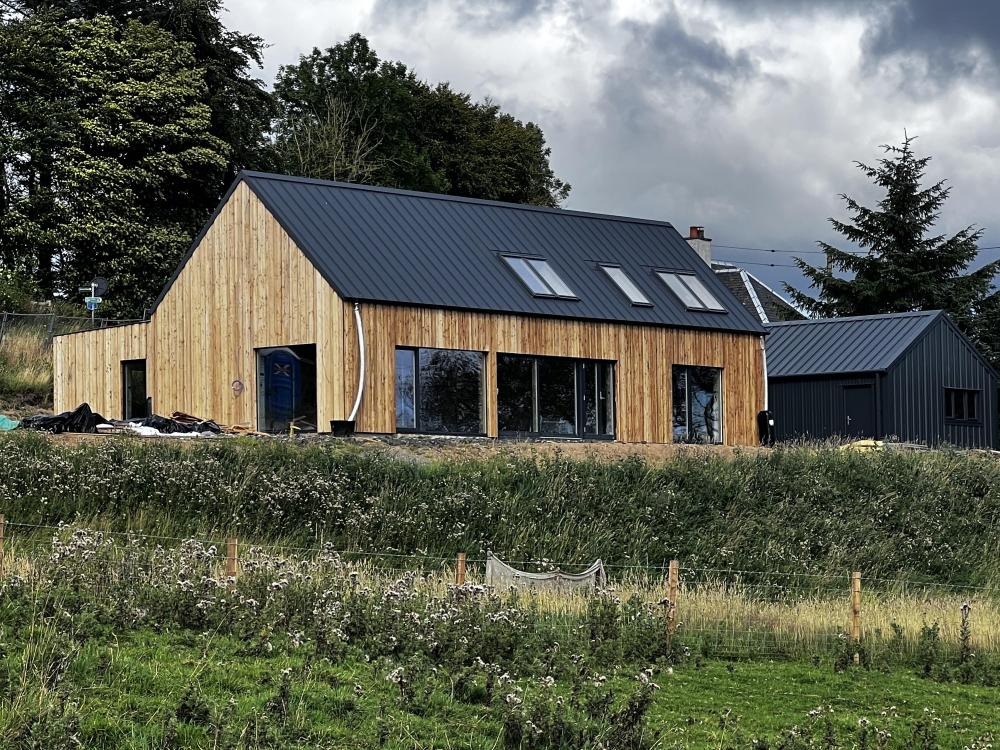Leaderboard
Popular Content
Showing content with the highest reputation on 09/08/23 in all areas
-
you want a planning consultant not an architect. You already have the first hurdle jumped, planning in principle so its down to plans. Find a good consultant to look over the plans, they will know the local planning inside and out (probably worked there as well). May be the case of put in what you want and appeal it. You are in the position of having 2 bites of the cake so refusal isnt a show stopper. If the appeal is unsuccessful you havent lost anything apart from some time.2 points
-
How do they define a "dormer"? I hate the things, difficult to detail correctly, and you lose headroom. So this was my solution instead, "gable ends" One at the front ant 2 at the back. Full unrestricted headroom. much easier to detail in all respects compared to a traditional dormer. See if your planners would accept something like that?2 points
-
Even at a reasonable premium, I'd go 3 phase for 22kW home charging and future proofing for V2H + the larger PV allowance. EV's are here to stay for at least the medium term and batteries will be increasing in capacity over the next 10 years.2 points
-
Are you asking about the DNO supply or what you route around the building? The for the supply, if there's no extra cost it's a no brainer, get 3 phase to the meter head. You can alway start with a single phase meter on it, and "upgrade" to 3ph in future if it's ever needed at minimal cost. Whereas upgrading the supply line to building at a later date will cost thousands. Aside EV charging (which I personally believe is a growing requirement here with us to stay, for at least our lifetimes), the 12kW allowance for solar before needing G99 paperwork is a big bonus.2 points
-
1 point
-
So after a couple of false starts the battery is being installed. Went with the Givenergy all in one, with is rated at 13.5kWh and allows a 100% at that capacity. It also gives a whole house uninterrupted power supply in the event of a power cut and allows my PV to function in a power outage. There Is a hope he will install it all today, but think he will be back tomorrow finish off, he has just been called away - typical. First difficulty was getting in the upstairs plant room (through loft hatch) luckily I had installed a winch for the DHW cylinder, so we used that. The gateway unit, controls the power flow, batteries, mains power, consumer unit, PV, vehicle charge point all connect to this. This will be located directly above the consumer unit and meter. Needed to run a new earth spike to the unit and new cable for a stand-alone generator, these are inserted through the J tube going under the house. Battery and inverter, without access, trim panels installed. Had to move MVHR pipes, as the unit is free standing.1 point
-
We had some rough ground; made it rougher with a 20 ton excavator moving some of it around / installing a heat pump ground loop etc; and needed to tidy it up. 1) Cultivate / till it (nearest tractor will do) 2) Now what...raking this area by hand requires Olympian endurance... You will need: 4x 3 metre / 10 foot long 2x4s 3x 1 metre-ish / 3 foot-ish long 2x4s 2x logs as extra weight 2x pipes (for corner marking) 2x ratchet straps (spares useful...) 1x small car And it works bloody amazing for levelling and compacting *just right* for putting grass back. The mk1 attempt (6 metre wide rake on a Ford Focus) was a little ambitious. The mk2 attempt (without logs) did fudge all. The mk3 (four logs) was too much of a handbrake. The mk4. you see...just right. I would guess 100-150 kg. Smooths it AND is flat/heavy enough to kick all the field stones and tree roots etc up and out onto the surface. Ready to absolutely not throw in the back of your wife's car like it's a glorified wheelbarrow and spend the journey home wondering how long it'll take to remove all the insects. 😇 Ratchet straps (free end wrapped around the frame once and clamped with a piece of wood; hook end on the car to avoid flying metal bits if it breaks) are the perfect strength for being able to pull this along without being too deadly to car or tree when you get ambitious and chop down to 2 metre width do this bits between the trees... Next month expect a post about moles. 😂1 point
-
Tomorrow I go back to work after 2 months off. Now I have totally wasted that time, so thought I better catch up with a little experiment I had in mind. With some old 9mm OSB, I made a 200mm deep beam. It is 2.26 m long, and held together with cheap PVA 'no nails' type adhesive (cost a quid a tube). The flange is 100mm wide. One flange is 2 layers of OSB, the other is 2 strips of timber, 20mm by 35mm holding the other flange in place. To test it I put a box on it and filled it with water. It basically only moved 6mm when I had put 52 kg of mass in the middle. Some of that will be because the whole thing became unstable on the trellises. The result is shown in the last picture. Going to be plenty strong enough to make a shed from, so may use cheaper, thinner ply and smaller battening timber. I think I will get @Gus Potter and @saveasteading work out the numbers, my moments if gryration were jumping out the way when the box of water fell.1 point
-
If you're no more than 2 floors high, a 75mm vent is fine under English building regs.1 point
-
Find out if your planning officer is married. If he is, a hooker, some coke, and a photo. He will let you have whatever you want. Works every time.1 point
-
Maybe share plans for the replacement dwelling might help identify some improvement or line of defence. The existing house clearly lacks any merit, why would the planners want something similar?!1 point
-
I think it is done via a URL to a webpage that then has the functionality you are after on it.1 point
-
Well Merlot o'clock anyway. I have found that the best way to deal with board ends, assuming the horizontal rafters are not on the 400/600 grid as if they are you can fix them to the rafters, is just to use off cuts of the batten behind the board ends where they join to allow the boards to get mutual support from each other and that has never been a problem. Just cut grooves in the back of the battens to get the cables through but make sure you keep fixing screws away from the cables.1 point
-
Why would you get cross flow at 45 Degrees it (the fluids / solids) will get broken up by the bends before they get to the drop, start to fall as soon as the bend starts and worst case they hit the bend lower down on the other side and anything that might 'stick' will be washed away by the next flush on the other WC plus you have great rodding access down the top hole of the three way SP230.1 point
-
Architect should be able to write flowery stuff about the "local vernacular."1 point
-
If there isn't a watercourse and the percolation/ water table preclude a soakaway? Also in tight areas where there isn't room for the huge area of soakaway officially required? Sounds useful if it is readily accepted. Cost?1 point
-
Have you seen the actual correspondence from the planning stating this and in what context ? How does the ridge height compare with the existing building?1 point
-
Other than for conversion of existing septic tanks, I would struggle to see the benefit to this over a packaged treatment plant? That produce water clean enough to discharge to a watercourse. Unless the irish regs are different..1 point
-
1 point
-
Good. But the airflow through that will be much faster than in 110mm. Water and air are fluids so it depends on layout, bends and so on. A smaller pipe with bends may not allow enough air in, and restrict the drainage flow. Hence 110mm avoids the need for calculations and proofs.1 point
-
Strange they want a dormer ! I’m sure a tasteful one could be designed though . If that’s the only planning condition I’d go with it imho1 point
-
Errrm....no. I built about 250 such. The only ones with internal drains were where the client had an architect who insisted. They add a large element of leak risk at the gutters and downpipes. What warehouse or factory owner wants that? And the gutters might freeze. Plus there is the sound. Offices and leisure buildings don't want that, or leaks.1 point
-
Leave the ends in the connector or if you want to lose it, cut cores to different length and then wrap with insulation tape (cutting to different lengths prevents any chance of stray “hairs” shorting across1 point
-
Just to add to this, if you buy 2 core armoured cable, then it will be brown and blue cores, with the steel wire armouring used as the cpc/earth. Most people now prefer to have a separate core for the cpc/earth these days though, even if not actually required. Usually to mitigate the risk of some idiot builder damaging the sheathing, thus exposing the swa and starting the process of it rusting away. I usually try and buy single phase colours (brown, blue and g/y), for when using it in single phase applications, but it usually needs to be ordered in as no wholesalers seem to stock it. It’s now specifically against the regulations to use a green/yellow core for anything other than a cpc/earth, single 18th A2. This one is going to catch out a lot of plumbers!!!1 point
-
Car charging is a short term problem. Unless you're running a commercial kitchen, or a 12 bedroom with outbuildings, there is no need for the risk 400v in a domestic environment.1 point
-
I would Wrap some tape around the cores.. Just to identify them. It doesn't have to cover the old colour completely, just to identify which core is being used for each conductor. (I usually Wrap a 3" piece of insulating tape every 4" or so to old cores not identified)1 point
-
You know what would be good - a QR code next to the tell tale which would automatically email the picture to the engineer. Remote on site monitoring. I have no idea how to technically achieve this.1 point
-
Very wise. 25mm got lose under out inner layer of wet plaster. Too much may make it difficult to secure carpet at the perimeter however. Yes, i use 2.0 W/mK for sand and gravel soils. Yes.1 point
-
Hi I have been lurking on here for quite a while but not got involved. Just a update our on VAT reclaim and our time frame. We knocked down previous bungalow and started our new build in July 2019, we moved in in June 2021. The house was not anywhere near finished but we had a kitchen and 1 ensuite. We eventually managed to get building regulations sign off 1st June 2023 (we were worried about Hmrc and being lived in for 2 years). VAT reclaim posted off on 21st August 2023 for about 21k, had a confirmation text and letter on the 29th August confirming they have received it and should hear within 6 weeks. I received another text yesterday (1st September) while on holiday saying your DIY refund has been issued, I thought it had been refused as it all sounded to quick. We got home today to find the package from Hmrc with a letter confirming that the full VAT reclaim will be paid 21k. I checked my bank account and it was paid yesterday. I can't believe it was less than 2 weeks with and 480 invoices and no deductions. Even though I have not contributed the help in this forum has been very helpful Thank you.1 point
-
Cladding finished. Really happy with the end result. It’s not obvious from the pictures but there is a distinct colour difference between the end elevation and the front elevation. The end elevation has been up about two weeks and is already significantly less orange and lighter compared to the front. Really happy so far with how it’s weathering.1 point
-
1 point
-
This post is about attempting to reducing the risk that self-builders take when purchasing goods and services. By another name: Due Diligence. The intended audience is self-builders. People who have an on-going building project and are spending what (for them) is a significant chunk of cash. This post (when it's finished) is intended to help readers decide for themselves how to reduce the risk involved in the process. The notes below assume that the client (you) is a Domestic Client (under CDM 2015 that term is explained here ). This post is not intended to be anything more than a general guide. A starting point for your own thinking. The contributors are not experts. But over time, some of us have become what the research literature calls Expert By Experience. (Here's a web search that explains the term) Some members here are professionals - builders, sparkies, plumbers, brickies, there's even the odd Structural Engineer, a BCO or two, and - praise be - someone who knows about rendering. There's even a man who knows about trees. There's a Planner or two and we have some people with a good deal of legal experience under their belt: that's not to call them lawyers. They may from time to time let slip that they are - in the business. But Its more common for members to keep that to themselves. There's the odd bar-room lawyer here too. I would like to emphasise that even if the posts those members write appear to you to be definitive, that the post sounds authoritative, and is exactly what you need to read, members acting on that advice should still do their own Due Diligence. Nobody here knows your project as well as you do. We're all in a hurry to get on with our building project . That means KISS doesn't it? This thread isn't the place for that (KISS). This thread is intended to enable everyone else to contribute their comments . So it'll go off topic now and then, that's normal. When the comments settle down and the thread loses 'steam', I'll summarise it, and ask the Mods to pin it so we can all have access to it quickly. Due Diligence needs to be appropriate and proportionate to the project. So the post is divided into subsections below A quick note on building projects, family, friends, Mates Rates and Due Diligence. Here be Dragons. Nasty fiery dragons. A professional relationship is often impossible when you employ people close to you. It could be seen as insulting to ask (say) an uncle to refer you to a couple of his clients to talk about his clients' impression of his work. Maybe you can't avoid employing a close relative because there have been cost over-runs, and the 'generous' offer is made to sort-it because 'I've done loads-a jobs like this ' . And S(H)WMO is chittering about completion dates and the kitchen spec disappearing into a forced trip to IKEA. My own teeth are clenched now..... There's no way round the problem. Passive Aggression is unlikely to work. The only way I have found round the issue - and its only a partial answer - is to ask the 'mate' to do very small bits of work, and try to build a good working relationship from there. Mates Rates is often a diplomatic nightmare. Maybe you have a good handle on how to deal with poor work and Mates Rates. Please contribute below. At it's simplest, Due Diligence is about risk reduction. It can be a hugely resource intensive process, and at the other end of the scale it can be a quiet word in the pub with someone who has worked with [...] The process needs to be proportionate to our needs. The notes below disregard the 'heavier' end of the scale: there's little point in doing Due Diligence on British Gypsum, but there is every good reason to think about why plaster board is being offered at a very low price on Ebay. And you really do need to look what a Check-a-Trade operative has built before now Due Diligence: The online guidance Bearing in mind the caveat that the Internet is full of shared ignorance, and on Social Media in particular, I've done a few searches and read some apparently authoritative sites to promote discussion here. Here's what architecture100 has to say on the matter The Construction Wiki has this to say about the process This section on the Master Builder website had me sucking my teeth about what was left out of their advice, but for the sake of completeness, here it is. Here's another Architect's take on the matter . I haven't found any Architectural Technician's website offering advice on Due Diligence. Social Media. I'm not sure whether to recommend that we check a trader's or company's social media profile. Those profiles are so easily manipulated. But on the other hand , it only takes a few seconds and may provide some pointers to further research. Companies: for example window suppliers or build-system suppliers I'm very conscious that concerns originating in this sector of the build market 'caused' this thread. Many contributors had good points to make, and I'll summarise them in the pinned thread (later) Sole traders How do you check (do Due Diligence on) a Sole Trader? At first it seems a daunting task but , broken down into small chunks the task becomes manageable. The process of building a house relies on networks of people. Many of whom will know one another, or 'of' one another. That network is invaluable. And it is often exactly what is not available to the average Domestic Client. You can - with a lot of effort - break in to that network. But it takes time. Nobody wants to spend more time than necessary building a house. Locally it is common to hear of customers waiting for a couple of years for the 'right' builder to become available. In Due Diligence terms, a customer makes the judgement that it is worth the wait to have builder X working for them. The risk is acceptable Due Diligence is hard work. It involves active listening and listening between the lines. Some 'cues' are easy to recognise. Like these for example; "But I thought the decision to buy [...] was a Done Deal .... Why are you hesitant now? Another useful cue is the persistently unanswered phone call, the unanswered emails. Asking for referrals from someone who is already working for you is a good method of risk reduction. Traders are unlikely to recommend poorly performing colleagues. I'm sure there are aspects of Due Diligence that I haven't covered. Thats why I hope that you'll add to the thread below: tell us what you think, what worked for you. So we can all benefit from what @MikeSharp01 memorably calls the Hive Mind. Online resources Expert By Experience: web search 19/04/2023 https://ggle.io/5i5v Architecture 100 website downloded 19/04/2023 https://bityl.co/IGSE Construction Wiki 19/04/2023 https://bityl.co/IGSV Master Builders website on Due Diligence 19/04/2023 https://bityl.co/IGSp1 point
-
All my suppliers of services came from direct recommendation of other people on site or I already had previous experience of them as a company, those companies are the ones I took recommendations from. There was two exceptions two exceptions to that, the company that did the roof structure and our standing seam roof covering. The roof structure company wanted a material deposit, this deposit was to be paid to the company building the roof posi rafters. I insisted the deposit would not be paid until I was copied on all correspondence with the third party company and had seen the PO issued. A final payment had to made for material prior to them starting at site. So agreed that as soon as the lorry was parked by our house I would release the funds. Which I did, they started work the next day. The other company and all other companies were paid for work and materials after the work was completed, or I purchased the materials myself and free issued on a labour only basis. How you mitigate for a company going bankrupt, is difficult. Durisol went that way after our build was completed. But having a more normal build you can at least spread your supplier base so all your eggs aren't in one basket.1 point
-
I got planning permission for conversion of three barns into a home in 2007. I converted a small byre, part of that project, in 2010 to comply with the condition to start work within 3 years. Building control signed the building off, which in hindsight was a mistake as It should have been part of the whole project and signed off when the rest was finished. Fast forward to 2022 and the entire project was nearly finished ( I was forced to get my Architects Certificate signed prematurely as the Architect was retiring at 88 !) I didnt know if I could make a successful VAT claim because the project had essentially started in 2010, been signed off, and no claim with the required 3 months made. I came across Andrew after some online searching. Andrew McDonald MAAT FCCA SELF BUILD VAT 33 Ocean Way, Pennar, Pembroke Dock, Pembrokeshire SA72 6RA Tel: 01646 687599 He is a self builder, and an accountant. He talked me through the rules and advised that I had a good chance of a claim, on all the building work EXCEPT the small byre completed in 2010. He was clearly used to challenging the revenue- in court if necessary, if he felt they were not applying the rules correctly. I sent him all my invoices, and he prepared the spread sheets and made the claim, with appropriate covering letter. As my build wasnt finished entirely due to my elderly Architect forcing my hand, I continued to rack up bills after the claim was made, which had significant VAT attached. After about six months of waiting for my VAT refund- to no avail, I contacted Andrew and mentioned I had more bills. He argued that the claim process was a two way street, and it was unreasonable for the revenue to refuse to add these claims to the original claim, as they had been keeping me waiting so long. A further collection of invoices was submitted, the VAT element of which, came to over 3K. Twelve months after Andrew lodged my claim with HMRC, I received a full payout of 16K, with no queries or rejections. I am of course delighted, and felt I should share the details of this superb professional contact. Andrews fee was a very modest £500.00. This account is entirely my own personal experience and I have no other relationship with Andrew other than as client. In fact I have never even met him in person ! I hope my experience is of interest to other self builders. Simon.1 point
-
F me ! That’s my tactic ! . Not for the twat officer - but for me !!0 points
-
Openreach are taking the pi55 with me. I sent them the standard block plan which, of course, has been through 9 levels of LPA validation. (there are 5 houses in this post code...) "We can't see where this is..." "Yeah, maybe the post code or the easting/northing pair, or the road name, the names of the nearby buildings, the plot outline in red maybe?" "We can't see where this is..." So, I take the admin through the block plan on the phone pointing out where each of these pieces of information can be found on the electronic paper. "Maybe you could just type the postcode or the easting/northing into Google maps?" "No we can't do that." "We can't see where this is..."0 points




